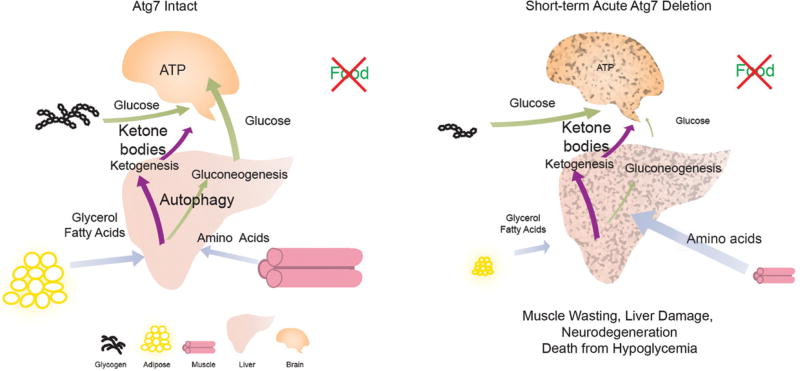Figure 1.
Mechanism by which autophagy promotes the survival of adult mice during fasting. During fasting, healthy adult mice activate autophagy and degrade glycogen to maintain circulating glucose and mobilize lipid stores to produce glycerol and fatty acids for ketogenesis and gluconeogenesis. As a last resort, muscle degradation by atrophy-associated E3 ligases may supply amino acids for ketogenesis and gluconeogenesis (Karsli-Uzunbas et al. 2014). As a result, glucose homeostasis is maintained by autophagy in mice to surviving fasting. However, fasting adult mice with acute autophagy ablation causes excessive depletion of nutrient stores including lipid and glycogen, accelerated muscle catabolism, and liver damage, which causes severe systemic hypoglycemia, brain damage, and mouse death. (Modified, with permission, from Karsli-Uzunbas et al. 2014, © AACR.)

